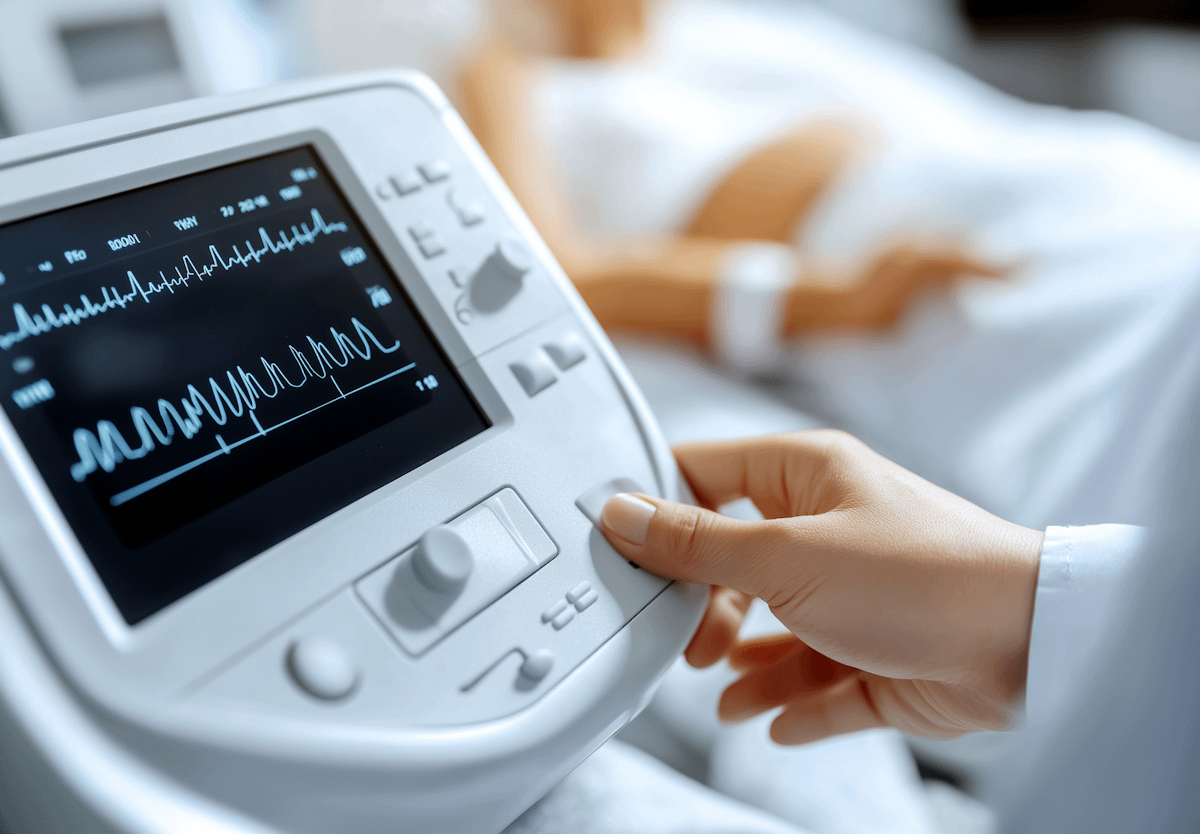Table of Contents
A catastrophic injury can change everything in an instant. It affects your health, your ability to work, and the daily life you once took for granted. Beyond the immediate medical needs, these injuries often create long-term challenges that touch every part of your world: your independence, your family, and your future plans. Pursuing fair compensation can help you cover medical care, lost income, and the support you need to rebuild your life.
At Levin Litigation, we handle these cases with experience and focus. We gather the evidence early, work closely with medical specialists, and document the real impact of the injury on daily life. Our team develops comprehensive valuations that reflect both immediate and long-term needs, while keeping you informed and guiding you through every step. We make sure nothing is overlooked, and every detail is treated with the care it deserves.
What is a Catastrophic Injury?
A catastrophic injury is a severe injury that significantly limits a person’s ability to work or manage daily life in the long term, or even permanently. These injuries typically affect an individual’s mobility or cognitive ability, require them to undergo extensive medical treatment and rehabilitation, and make use of assistive devices or caregivers in order to eat, mobilize, or perform other day-to-day activities.
Types of Catastrophic Injuries
There are three common types of catastrophic injuries, including brain injuries, spinal cord injuries, and burn injuries. Below, we’ll discuss how each of these can affect a day‑to‑day living.
Traumatic Brain Injuries (TBI)
A brain injury can change how a person thinks, feels, and functions. Memory lapses, mood swings, headaches, sensitivity to light, and trouble concentrating can make school or work a daily challenge. Even a so‑called “mild” concussion can leave lingering problems for months. More serious brain injuries may involve hospital stays, therapy to help with thinking and speech, and long‑term help at home. Symptoms are not always obvious right away, which is why rushing into a quick settlement can be risky.
Spinal Cord Injuries
Spinal cord injuries can lead to weakness, numbness, or paralysis, and they often bring everyday challenges that most people don’t see at first. Tasks like getting in and out of a car, bathing, or preparing meals may require hands‑on help or home changes such as ramps and wider doorways. Some people also deal with breathing problems or changes in bladder and bowel control that call for ongoing care. Planning for these needs isn’t a one‑time step; it evolves as the person heals. We work to account for hospital care, therapy, mobility aids, home modifications, and caregiver support so future costs aren’t overlooked.
Severe Burns
Severe burns often require multiple procedures over time and can leave lasting scars and tight skin that limit movement. Pain, itch, and sleep problems are common, and returning to work can take longer than expected. Recovery usually comes in stages: emergency treatment, surgery, wound care, and later procedures to improve function and appearance. Daily life may also involve special clothing or dressings to protect healing skin, along with counseling to support emotional health. A strong case connects these medical steps to real‑life needs like time away from work, the cost of ongoing care, and support at home.

Common Causes of Catastrophic Injuries in Florida
Catastrophic injuries can happen in many settings. Early investigation is critical to preserve footage, incident reports, and witness statements, and to identify every responsible party. The causes below are among the most common across Florida:
Motor Vehicle Accidents
Car, truck, motorcycle, pedestrian, and bicycle accidents are some of the most frequent causes of serious injuries. These crashes often involve speeding, distractions, impairment, failure to yield, unsafe lane changes, or poorly maintained vehicles. Depending on the circumstances, responsibility could fall on the at‑fault driver, a vehicle owner who negligently entrusted the vehicle, an employer of a commercial driver, a maintenance shop, or even a road contractor if unsafe construction zones played a role.
Unsafe Property Conditions
Serious injuries can happen anywhere, from construction sites to apartment buildings or public spaces. Collapsing structures, broken railings, slippery surfaces, poor lighting, fire hazards, exposed wiring, and lapses in security can all lead to harm. Negligence might include ignoring known hazards, skipping inspections, violating building or safety codes, failing to maintain equipment, or providing inadequate protective measures. Liability can be shared among property owners, tenants, management companies, contractors, and security providers when safety responsibilities overlap.
Boating Accidents
Injuries on the water are more common than people think. Propeller strikes, high-speed collisions, personal watercraft crashes, and dive accidents often result from operator inattention, excessive speed, alcohol use, lack of proper lookout, or poorly maintained equipment. Those responsible might include the boat operator, owner, rental company, tour or charter operator, marina, or resort.
Workplace Accidents
Serious injuries at work often involve equipment failures, trench or scaffold collapses, electrocution, chemical exposure, or fire hazards. These accidents can happen when proper safety measures aren’t followed, such as missing fall protection, improper work sequencing, inadequate training, or poor hazard communication. Responsibility can extend beyond the employer to include general contractors, subcontractors, supervisors, equipment rental companies, utility providers, and other third parties, especially on multi-employer worksites.
Defective Products
Hazardous products like faulty vehicle parts, lithium-ion batteries, household appliances, and medical devices can cause catastrophic injuries. Negligence and product liability often overlap through poor design, inadequate testing, insufficient warnings, improper installation, or failure to recall known defects. Liability may extend to manufacturers, distributors, retailers, installers, and service providers whenever a defect or unsafe instruction causes harm.
Understanding Compensation for Catastrophic Injuries
Catastrophic injuries often create financial, medical, and lifestyle challenges that can last for decades if not a lifetime. Through a catastrophic injury claim, injured victims can often pursue compensation for:
- Medical care: Surgeries, ongoing therapy, rehabilitation, and hospital stays
- Home care and support: Nursing, in-home assistance, and long-term care
- Specialized equipment: Wheelchairs, mobility aids, or adaptive devices
- Lost income: Past and future wages, diminished earning capacity
- Lifestyle adjustments: Home modifications, transportation, and accessibility needs
- Emotional and psychological support: Counseling or therapy for coping with long-term effects
Because catastrophic injury compensation involves both immediate and long-term needs, it’s important to work with legal and medical experts to ensure all losses are fully considered.
Why Catastrophic Injury Cases are Complex
Catastrophic injuries can change a life in ways that are hard to predict. Beyond the immediate medical care, there may be years or even decades of surgeries, therapy, nursing support, and specialized equipment. Lost wages, diminished earning capacity, and the need for long-term in-home care add another layer of complexity. Because the full impact often isn’t immediately visible, accurately valuing a case from the start is essential.
Another challenge is figuring out who is actually responsible. Many cases involve multiple parties: drivers, contractors, property owners, product manufacturers, or healthcare providers. Insurance policy limits mean that filing a claim against just one party might not cover the full cost of care, so it’s critical to identify all responsible parties early and build a clear, fact-based liability story.
Finally, high-value cases often face aggressive pushback from insurers, who may challenge coverage, dispute liability, or try to minimize payouts.
In short, catastrophic injury cases require strong legal support in order to be successful. A lawyer can work with medical experts to accurately calculate future losses, identify all responsible parties, and fight back against aggressive insurer tactics.
How Our Florida Catastrophic Injury Lawyers Can Help
At Levin Litigation, we understand that catastrophic injuries can turn your life upside down. The physical, emotional, and financial impact is profound, and navigating the aftermath can feel overwhelming. Our approach is focused on guiding you clearly through every step, so nothing important is overlooked.
We focus on the steps that matter most:
- Securing the evidence – Scene photos, 911 audio, event data, maintenance logs, and surveillance footage are collected quickly to preserve the full picture.
- Documenting the impact – We work with doctors and specialists and create day-in-the-life records showing how the injury affects daily routines, relationships, and future plans.
- Valuing the claim – Life-care plans, earning-capacity analyses, and comprehensive damages calculations reflect both immediate needs and long-term costs.
What sets our catastrophic injury attorneys in Florida apart is how we approach every case: we lead you by the hand throughout your case, not lead you on, with honesty and transparency at every step. We use modern, innovative strategies and the latest tools to work smarter and faster. Plus, our deep knowledge of how insurers operate gives clients a strategic advantage in negotiations and settlements.
If you’re ready to explore your options, schedule a confidential consultation with our team today.





